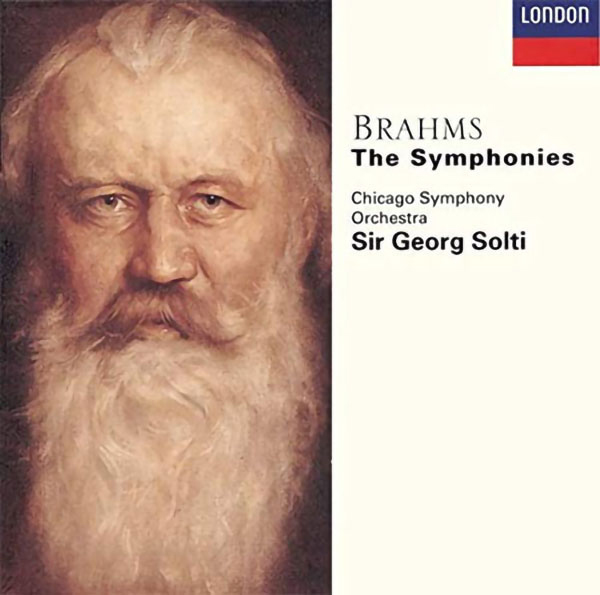
Sir Georg Solti and The Chicago Symphony Orchestra, Brahms The Symphonies, London, CD
As a gigging musician, I spend a lot of time in the car driving to rehearsals and performances. Most of my listening takes place within the confines of my Infiniti G37 with its stock Bose stereo. I know, I know… But in a car, it actually sounds pretty good.
On a recent trip to Punta Gorda, Florida, I had time to listen to the four symphonies of Johannes Brahms. Of all the great romantic era composers, Brahms is my favorite. His lush textures speak of both power and beauty while transporting the listener into a world that’s wholly different from Beethoven or Mahler.
My benchmark recording of the cycle has always been the 1979 London Digital editions performed by the Chicago Symphony under Sir Georg Solti. There is a humanity and reality to these performances that just don’t seem to exist with modern orchestras. It’s interesting to attend a concert of a top ensemble like the New York Philharmonic and marvel at their technical precision, their command of soft dynamics, the awesome power of the brass section when fully unleashed, and the incredible unity of the strings. Each section; violin, viola, cello, and bass; sounds like a single gigantic instrument.
The playing level in today’s orchestras is far higher than what existed in the seventies. Listening to the Chicago Symphony of 41 years ago reveals phrases that aren’t quite together, soft dynamics that lack control, intonation difficulties and even the occasional cracked note in the brass. Today’s local and regional orchestras can claim a technical proficiency that is superior in many ways.
But to focus on the technical is to miss the point. Music flows ultimately from the heart and soul, not just the mind, and from that perspective, the Solti recordings will probably never be equaled. It’s not just how they sound but also the feelings they evoke. Everyone has their favorite Brahms cycle but even after listening to more modern versions that are accurate to a fault, and musical too; I’ll still put Solti and Chicago back on like a favorite sweater. It’s so familiar that I can’t imagine enjoying any other recording as much.
Historically, these CDs are interesting because they are among the first sessions recorded entirely in the digital domain. They were mastered on digital tape and first released on vinyl before making the conversion to CD in 1992. I have two other titles from this collection, the Complete Beethoven Symphonies, and Berlioz’s Symphonie Fantastique. I’ll be spending some time in the car soon with them as well. Thanks for reading!

Lingua Ignota, Caligula, high-resolution WAV files purchased at bandcamp.com
I have long enjoyed challenging music, but this is a whole new level and kind of challenging for me. Kristen Hayter is a classically trained multi-instrumentalist and vocalist and this album sees her dealing with issues of abuse, revenge, and trauma. Hayter performs under the name Lingua Ignota (which means “unknown language” in Latin) and this album is a harsh and traumatic ride, and ultimately cathartic. I’ve listened to it over ten times already and am just beginning to understand its complexity.
Hayter claims to disavow genre and here she has succeeded completely. Ranging from experimental metal to electronic noise to stringed chamber ensemble to solo piano, the styles of the album are all over the place but always coherent. No instrument, trick of the studio, or vocal note is out of place here. One cut begins with a pipe organ and works its way into heavily echoed heavy metal. It all just works. One second, you are hearing slight whispers, and the next you feel like you’ve just been pushed over the side of the cliff, and all you hear are screams.
I bought the album on Bandcamp for $10US. I chose to download WAV files and was pleased to find that they are 32k/96Hz PCM S24 WAV files. And the sound quality is spectacular. Just try getting a new album’s digital files in this resolution from any of the major vendors for this price; I don’t think you can do it. Bandcamp is one of the best sites for up-and-coming artists who have decided to skirt the hassles of dealing with major labels. The site’s social media presence is strong, they support and host every possible kind of musical artist, and their pricing is very competitive. They don’t just sell you low-resolution MP3 files (like what you get lately with most album purchases from the major labels), and you can listen to an album in its entirety before you make the purchase (unlike most of the major online music vendors).
Do yourself a favor; support promising young artists like Kristen Hayter, support the platform enabling these artists to sell high-resolution music at very good prices, and support your hunger for new music by listening to a very wide variety of artists on Bandcamp. It’s quite likely you’ll be surprised.
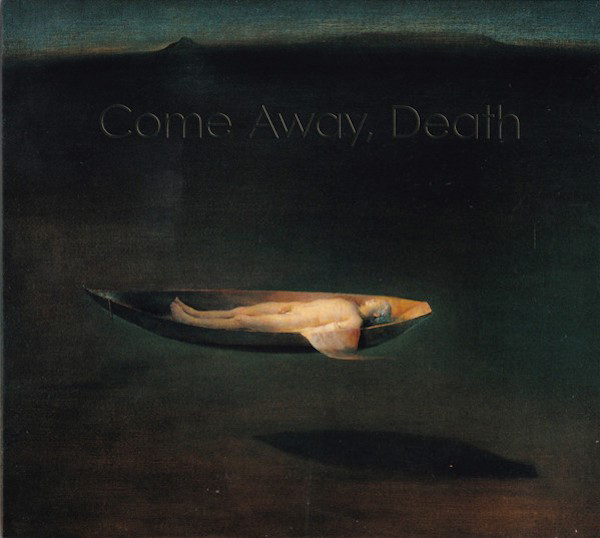
Marianne Beate Kielland, vocalist, Sergej Osadchuk, piano, Come Away, Death, 2L Records, 2L-064-SACD
The Norwegian 2L label is dedicated to releasing state-of-the-art recordings made in acoustically significant spaces. This SACD finds Mezzo-Soprano Marianne Beate Kielland and pianist Sergej Osadchuk playing together in a church in Oslo, Norway. This SACD can be played in 5.1 sound, but I can only do two channels, but that really did not detract from the experience.
The imaging and resolution of voice and instrument are some of the best I’ve ever heard. But most delightful is how black the background is; the music is at times sparse and slow, and it was possible to hear the piano and vocal notes decay into blackness and silence for what seemed like eternities. It was very interesting to be able to hear the inner spaces of the church as sound waves bounced around.
I’ll admit I’m not very informed about singers like Marianne Beate Kielland, and I do not know very much about the great operas or Lieder, but there’s something about her strong and effortless voice that just captivates me. Hearing her roll Rs between syllables or carry a note as it soars up and down is quite thrilling for me. Sergej Osadchuk’s piano playing is quite emotive and delicate, and there are moments when he plays what are, to my ears, dissonant chords that are very emotive and fascinating at the same time. I found every performance on this SACD quite captivating. I also found myself wanting to buy more recordings from the 2L record label to hear more Scandinavian music.
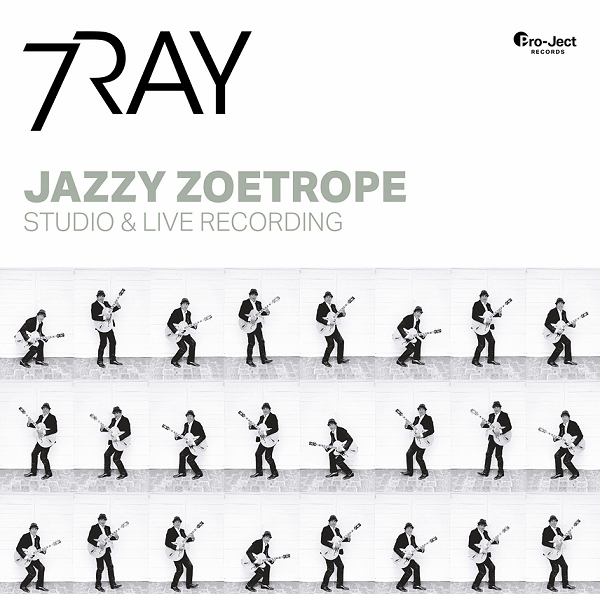
7RAY, Jazzy Zoetrope, Pro-Ject Records, PJR001, 2019, 2LP
Pro-ject Audio, mostly known for their fine turntables, released their very first vinyl album, entitled JAZZY ZOETROPE, a jazz album featuring Austrian singer and musician 7RAY and his band Triple Ace. It was recorded, mixed, and edited entirely on analog equipment, and it sounds that way (really good). As you can tell by the title, it is a jazz album. Although it is standard 33-1/3 RPM, it is on two LPs, so there is a lot of music here to listen to.
One LP features music that was session recorded in Austria’s Studio Baumgarten while the second LP was a live performance, with a small audience, recorded at Pro-Ject Audio’s headquarters. I found it to be extraordinary. Very nice instrument localization in the soundstage. If you are a vinyl enthusiast and love jazz, this one is a must-have.
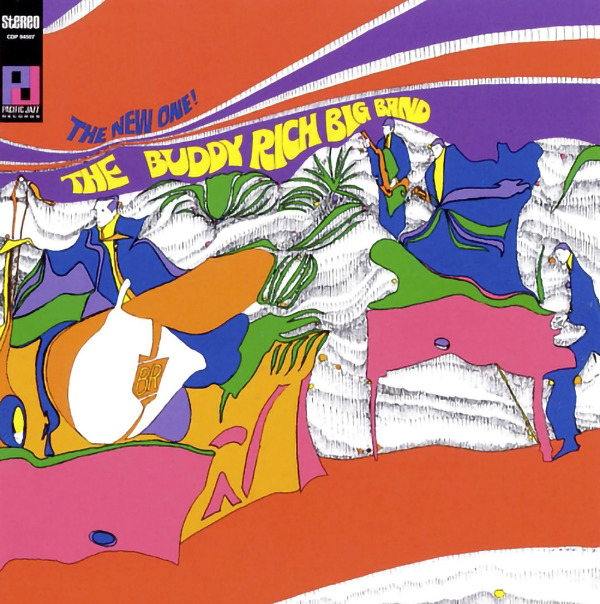
Buddy Rich, The New One, Pacific Jazz, CDP-94507
Speaking of jazz, this album from 1968 is one of Buddy Rich’s best (The New One, Pacific Jazz, CDP-94507). I listened to it via Tidal streaming. The opening track, Away We Go, is just unbelievable. Rich’s ability to follow the solo instrument’s beat with his left hand leaves the listener breathless. I heard him with his band in 1968 in Seattle, sitting within about 15 feet of him. I will never forget it. After that experience, I purchased all of his new albums.
This album is not recorded all that well, but it sure is better than not having it at all.

Eric Lu, 24 Preludes, Opus 28, Warner Classics, via Tidal Streaming
Besides obviously being a big fan of jazz, I also love classical music, with Chopin being one of my favorite composers. The Warner release, 24 Preludes, Opus 28, is a beautiful showcase for Chopin’s mastery of the piano. It is an excellent quality recording, with the microphone placement being a bit unusual. It practically sits the listener inside the instrument. There are also some tracks by Brahms and Schumann.
The combination is a good one for a relaxing afternoon. I listened to it via Tidal streaming, and it is in MQA (Master Quality Authenticated) compression. I had not heard of this pianist, Eric Lu, before. What an amazing talent.

Starset, Transmissions, Razor & Tie Recordings, 2014, Digital
Hard rock meets tech space music? This is what the band Starset has become, almost a great mix of Daft Punk and Effiel 65 launched into space. The song “Carnivore” was the first song I heard from the band years ago and it got me hooked on them.
The band actually has some unique backstory, fictional of course, “Starset was formed as part of a public outreach initiative by The Starset Society. The Society aimed to alert the public about the contents of “the Message” the society obtained from a mysterious signal from space.”
Secrets Sponsor
They are a fun band to listen to during long car rides at night while pondering off into space or just some late-night listening at home. With 3 studio albums out now, they have a good amount of work to listen to and I do recommend you give them a shot.
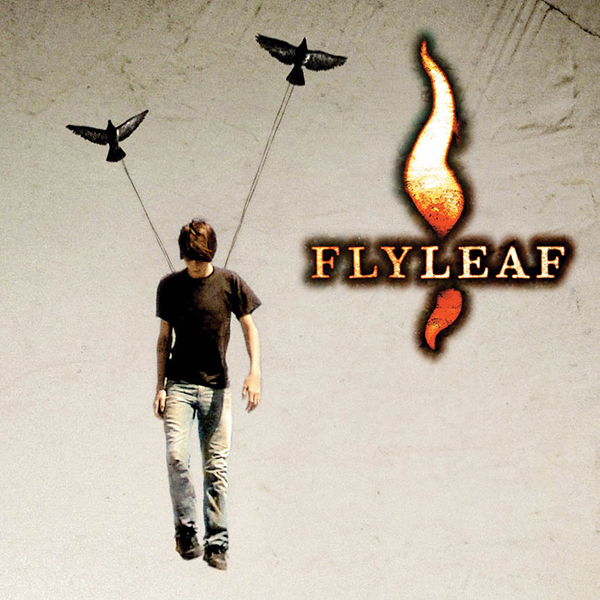
Flyleaf, Flyleaf, A&M Octone Records, 2005, Digital
Online Sample of “All Around Me”
Bringing back memories of the Xbox 360 game “Rock Band”, Flyleaf has had several fantastic singles starting with “I’m So Sick”, “Fully Alive” and finally “All Around Me”. The Debut Album “Flyleaf” went platinum after selling over a million copies. The classic lead singer Lacey Sturm left the band in 2012, while the band is now on hiatus as of 2016.
What’s next for this classic 2000s band? Hopefully, they will return, but for now, we can still enjoy the few albums they previously released. It’s been quite difficult to pin down exactly what genre Flyleaf really is, but I hope if and when they do return, they keep their iconic sound.
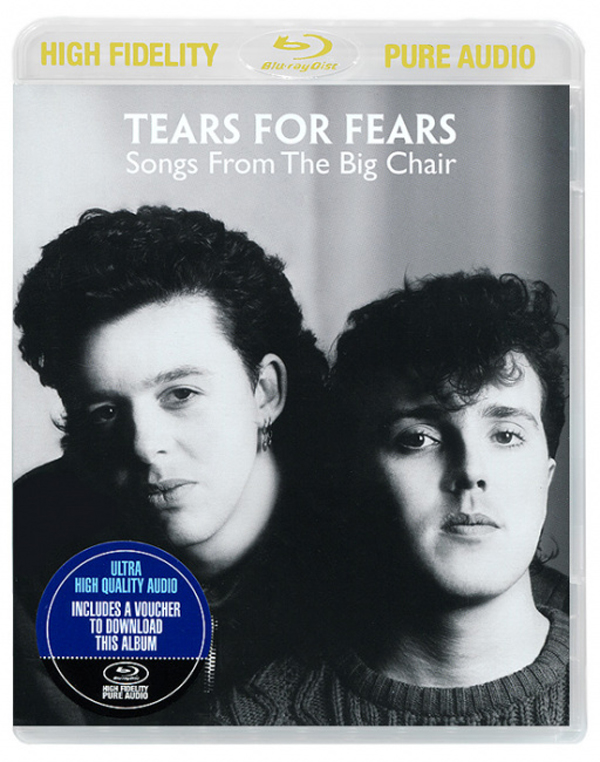
Tears For Fears, Songs From The Big Chair, Universal/Mercury Records, Blu-ray 5.1 Channel Mix
Originally released in 1985, the singles from this album were playing out of every radio, and the respective videos were shown on every TV music channel or weekly countdown you could find. Songs From the Big Chair was the musical juggernaut of much of my high school years. Beyond the hit tracks “Shout”, “Everybody Wants to Rule the World”, and “Head Over Heels” the entire album shows great artistry and musicianship leaving a much bigger impression than many of the other more superficial pop albums of the time.
I own the original CD and always found it to be a disappointment in sound quality exhibiting that trademark flat, lifeless presentation devoid of any real bass that so many 80s albums suffered from. I never understood whether this condition was due to the youth of the CD format at the time or the general production values or a combination of the two, but I long since stopped listening to it because it just sounded so awful on my system. This Blu-ray with both the 2014 stereo and 5.1 channel remixes by Steve Wilson is a revelation. The breadth and scope of what band frontmen Roland Orzabal and Curt Smith laid down on multitrack tape over 30 years ago finally can be experienced as it should. Both stereo and multi-channel versions have much-improved dynamics, detail, and bass but the 5.1 mixes are the real gem here. If you have fond memories of this music and you have a half-decent surround system, by all means, search this Blu-ray version out and play it. It will be like you are hearing it all again for the very first time.
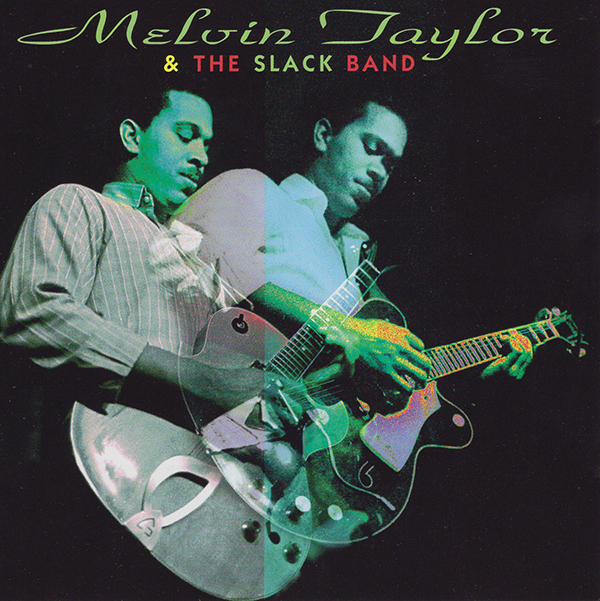
Melvin Taylor & The Slack Band, Self-Titled, Evidence Music, CD
An excellent, no-frills blues album by guitarist Melvin Taylor and his band. The recording quality is very good and it’s chock full of great covers of Otis Rush, T-Bone Walker, Albert King tunes along with some original compositions. Taylor’s rendition of Jimi Hendrix’s Voodoo Chile (Slight Return) is also a standout. Taylor isn’t an overly flashy guitar player, but his virtuosity is obvious, and he plays with a ton of feeling.
I bought this CD years ago after I saw him open for B.B. King and it’s one I come back to listen to often when I am working.

Khatia Buniatishvili, Liszt Piano Concerto No. 2/Beethoven Piano Concerto No. 1, Sony Classical Blu-ray
This concert film is taken from two performances with the Israel Philharmonic conducted by Zubin Mehta and is encoded in Dolby ATMOS. I first heard (and saw) this footage at CEDIA 2019 in one of the many surround sound demos that I experienced. It stood out amongst the other demos I heard because it was dynamic classical music that seemed to faithfully capture a concert performance versus just another explosive, high SPL movie clip. And strictly speaking of the music, it sounds positively wonderful played back in my ATMOS home theater, even if it isn’t as grand as the CEDIA setup that I originally heard it on.
There is a great sense of the recording venue’s acoustics that gets relayed during playback along with the dynamic swings of the musical performance that make it a joy to listen to. The talent that Miss Buniatishvili demonstrates in her piano playing is impressive, but the physicality of her performance and the interplay between her and Mehta as he conducts (afforded by well-placed camera work) is also amazing to watch. The music is superb, but the visuals also add to the enjoyment, getting me closer access to the musicians than I would have if I were just sitting in the crowd. The camera work is well done without distracting from the music.
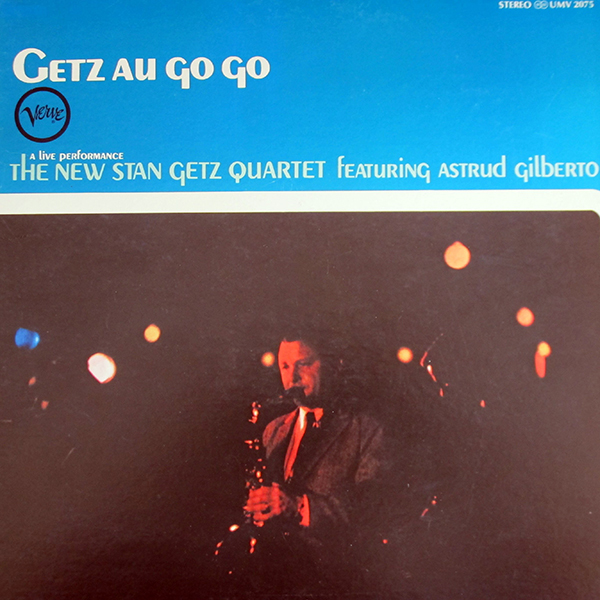
The New Stan Getz Quartet featuring Astrud Gilberto, Getz Au Go Go, Verve Records/UMG, 2-Disc/45 RPM Vinyl
This is one of my favorite jazz albums and it gets regular playback in my studio while I’m working. Live Bossa Nova doesn’t get much better than this, Stan Getz’s beautiful tenor sax playing and Astrud Gilberto’s slightly haunting but alluring vocals along with a tight backing band. Recorded in 1964 at the Café Au Go Go in New York, I have this album both in the original release 33 RPM pressing (thanks to my father-in-law), and as 24-bit 192 kHz high-resolution FLAC files (thanks to HD-Tracks).
Both sound great and capture the music well but this 45-RPM vinyl version from Universal Music Group and OMG is a delight to listen to on my Technics/KAB SL-1200 Mk 6 turntable with my Audio-Technica OC9ML/II cartridge. It just has that certain extra something that’s hard to quantify. Well actually, I can quantify it. It’s probably vinyl’s sympathetic distortion and noise profile along with the romance of playing an old music format. But you know what, I don’t care. It sounds marvelous!
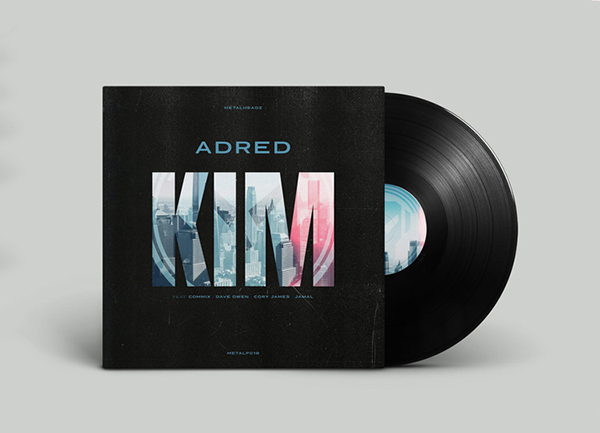
Adred, Kim, Metalhedz, Genre: Drum & Bass, 2020, LP
I’ve been waiting for this one. I don’t know much about Adred other than Adred makes good music. This sixteen track LP, named after his late father, features a wide and a host of collaborations with some of the finest talents in drum and bass at the moment.
Kim is a lighter easier listen of an LP, unlike a lot of the D&B out there which tends to be more aggressive and arresting in sound. It’s a welcome addition to the landscape and one I’ve been listening from start to end, which is fairly rare for me.
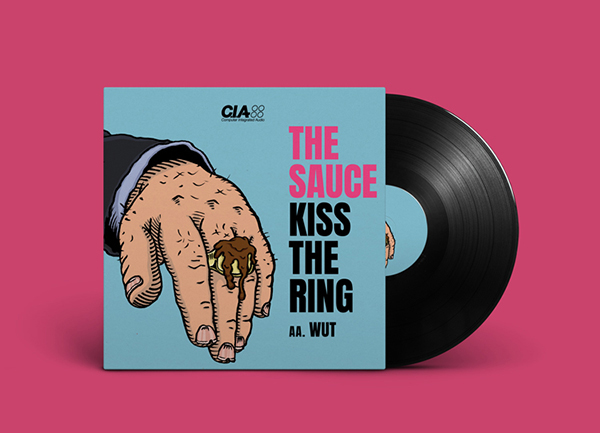
The Sauce, Kiss the Ring/Wut, CIA Records, Genre: Drum & Bass, 2020, LP
I don’t know much about The Sauce. Other than that I think it’s DLR, Hydro and Total Science on a collab effort. I could be completely wrong.
“Kiss the Ring” with “Wut” on the flip are just plain old fun. Jump Up D&B done right. Conversely, to what I just wrote above, this is a bit more in-your-face.
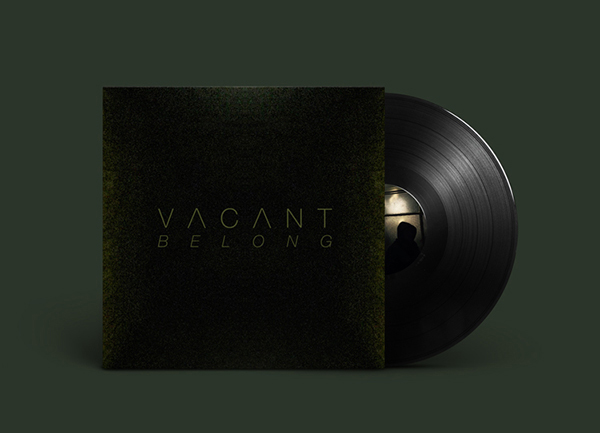
Vacant, Belong, Self Released, Genre: Dance & Electronic, 2019, LP
A bit of an older one, but something I just stumbled across recently. Vacant, a London based ‘future-garage’ producer released this effort in 2019. So still relatively new. It’s a dark, moody and cinematic affair and very listenable. I end up focussing on different aspects of each track on every listen. Totally worth a download.
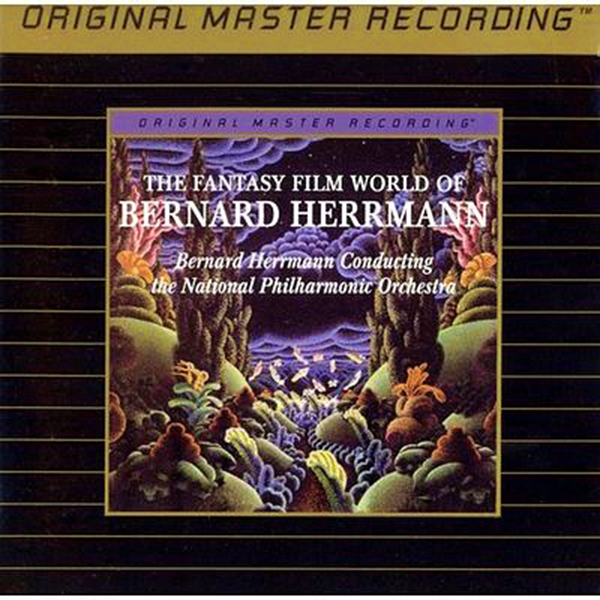
The Fantasy Film World of Bernard Herrmann- Bernard Herrmann conducting the National Philharmonic Orchestra, Mobile Fidelity 24Kt gold Ultradisc CD
Since some of the other writers are Herrmann kick lately, I thought I would chime in with one of my favorite soundtrack discs which include some of the films that shaped my early childhood. I have had this particular set of film music since my college days (late 70’s). This was recorded originally by London Records in “Full Frequency” sound and it sounds spectacular even by today’s standards.
Included are suites from Journey to the Center of the Earth, The Seventh Voyage of Sinbad, The Day the Earth Stood Still and Fahrenheit 451.
In Hermann’s words: In Journey, “I decided to evoke the mood and feeling of the inner earth by using instruments played in low registers. Eliminating all strings, I utilized the orchestra of woodwinds and brass, with a larger percussion section and many harps. But the truly unique feature of this score is the inclusion of 5 organs, one large cathedral and four electronic.“ For the scene featuring a giant serpent, he resurrected an obsolete medieval instrument called a “serpent”. It sounds bizarrely wonderful!
Sinbad contains a delightful fight scene where our hero battles skeletons and it is done using dueling xylophones. The opening and closing fanfares are loud and sweeping. What fun!
With Stood Still, electronic devices were used to portray outer space, including a Theremin, electric violin, electric guitars, and bass. There are no woodwinds and this scoring became the precursor to all electronic musical scores for other sci-fi films to come.
The last score, based on a book by Ray Bradbury, Herrman’s score tries to evoke the stifling political oppression which keeps the protagonist from displaying any outward emotions. I find the finale to be one of the most beautiful pieces of music written by a 20th-century composer. Hardly a week goes by where I don’t play this in a darkened music room.
If you are sci-fi fantasy buff and love Ray Harryhausen movies, this music will bring you back to a time of innocence and wonder. No one does movie scores like these anymore. It can be found on Quobuz, too.

Blade Runner 2049 Soundtrack- Hans Zimmer, et al. (CD version from Quobuz)
So, I have recently purchased a new subwoofer and needed something to help me dial the bass in my new music room. My sub can produce usable bass to 20 Hz and this soundtrack has one of the most amazing deep bass soundtracks I have ever heard. If things are not properly secured in your room, this will make things rattle around. In particular, I like the opening piece and the 3rd track, Flight to LAPD.
This track has slamming drum sounds from a cyclopean tympani. The music is very evocative and reveals a future that is, once again, dystopian. This soundtrack is as important to setting the mood of the film as any of the actors. As a bonus, the 4th track is frank Sinatra singing “Summer Wind”. Whoa…mind blown.
And yes, my sub is set up, thanks to this musical score. This is my new favorite sub demo, but, I still haven’t found my cat…
With Lent here and Easter coming, my tastes seem to be turning to hymns and gospel. Things I’ve enjoyed hearing lately include:
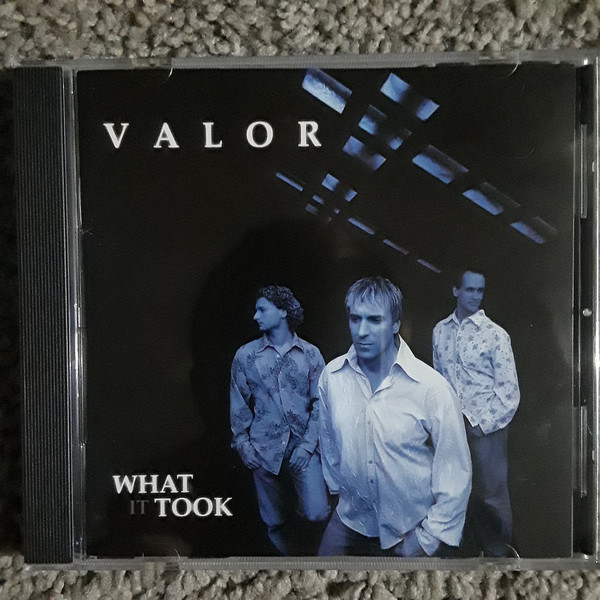
Valor, What It Took, Chapel Music, Gospel, 2006, CD
This one is HARD to find, and the gougers want ridiculous prices for a copy of the disc. But you can hear the best track of the disc on YouTube. Search for “Valor Music – How Great Thou Art.” If your system lacks bass, you won’t be happy. But you can generally enjoy this with a good set of headphones and get the majority of what’s available.

The Statler Brothers, The Gospel Music of The Statler Brothers – Volume 1, Gaither Music Group, 2010, CD
I also enjoy an occasional bout with the Statler Brothers. In particular, I enjoy the tenor of Mr. Jimmy Fortune, soaring above “Turn Your Radio On.” This one is also available on YouTube, but IMHO, the CD sounds so much better. A GOOD tenor voice is a thing of beauty, and Mr. Fortune, in his prime, was a wonder!
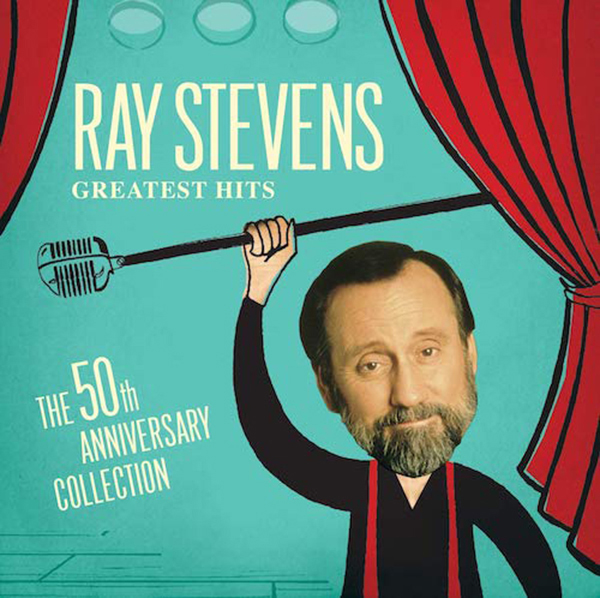
Ray Stevens, Ray Stevens Greatest Hits – 50th Anniversary Edition, Curb Records, 2008, CD
And gospel without whimsy would be a MUCH diminished thing. Mr. Ray Stevens always makes me chuckle with the surprisingly well-recorded “Mississippi Squirrel Revival.” His verse on “Sister Bertha Better-Than-You” sitting down in the “Amen pew” definitely reminds me of a few church spinsters I’ve known.
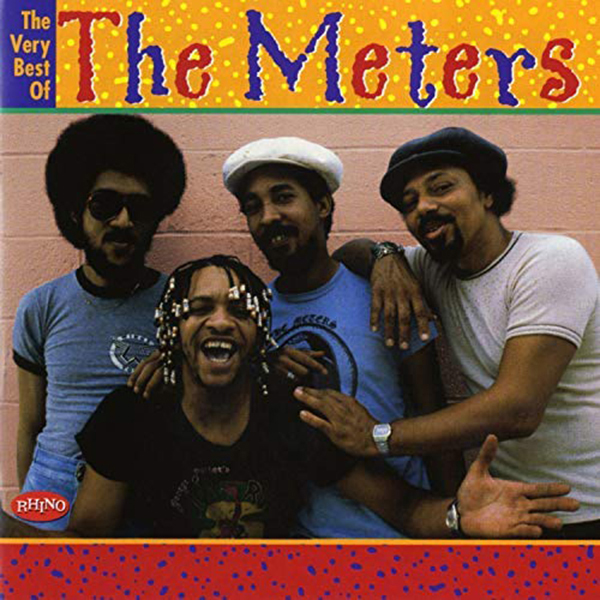
The Meters, The Very Best of The Meters, Rhino Records, 1997, CD
With Mardi Gras still fresh on everyone’s mind down here, the Meters’ infamous “They All Asked For You” is hard to resist (“Red beans and rice! Crawfish Etouffee!”). Everyone I play this for always asks who is singing.
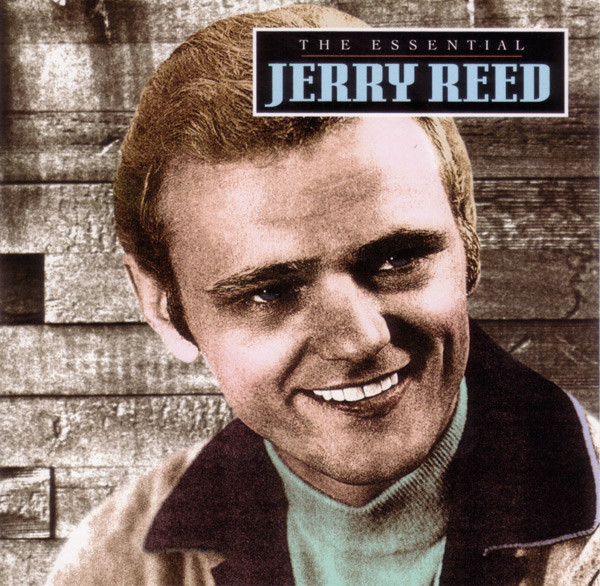
Jerry Reed, The Essential Jerry Reed, RCA Records, 1995, CD
And you just can’t leave the swamp without visiting “Amos Moses” by Jerry Reed – yet another surprisingly good recording.
For every track I’ve listed above, I’m enjoying another dozen that just won’t fit into my list this month – But may I strongly recommend each and every one of the above for your listening enjoyment!
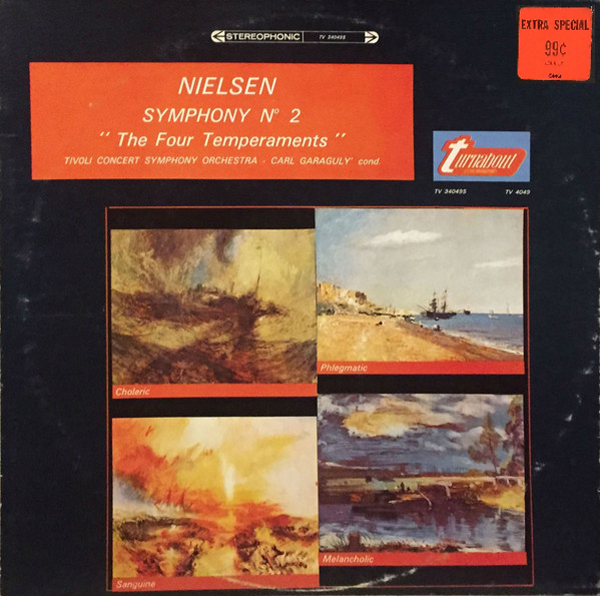
Carl Nielsen Symphony #2 The Four Temperaments Tivoli Concert Symphony under Carl Garaguly, Turnabout LP, 1968
When I was a kid on an allowance the Sam Goody bargain section was the place to be especially on Sunday with the New York Times snip-out discount coupon. The Naxos of the day was the Vox box. They were mostly standard repertoire classical presented in a three-LP box set. Some are available in CD reissues today. For less well-known composers they issued single LPs on the Turnabout label.
The photo shows a 99 cent, allowance sized, Turnabout LP that made it from Sam Goody to my place. This was one of the most important finds in my collecting life. At the time I was mostly on a diet of standard repertoire before I got to my teens. I remember lowering the tonearm on the outside groove of this particular album and suddenly music with the energy of a train was coming at me from my speakers. I am not talking about the energy of a 120-piece orchestra at fff. No this was a Brahms sized orchestra and the composer was just starting to evolve his language from Brahms so it was easy to assimilate on first hearing. Nielsen is Danish but there are no folk tunes here. He could do that but not in the symphonies. The energy is from the unique rhythmic language, harmonic progressions and use of dynamic changes.
Mahler is not the only composer Leonard Bernstein launched. His work in the 50s also started the reappraisal of Sibelius and Shostakovich. He introduced Nielsen and Ives to the repertoire. It was not just Bernstein, others were advocating for Bartok, Janacek, Elgar, and Vaughan Williams. Nielsen’s birthday was 1865, which placed the 100th anniversary in 1965, and provided the spark to record his works.
Secrets Sponsor
In 1965, every recording company was working to turn out Nielsen as fast as they could. RCA used the best, the Chicago Symphony under Jean Martinon and Morton Gould. Andre Previn did the 1st symphony for RCA in London but 3, 5 and 6 were never recorded on RCA. CBS had Bernstein and Ormandy together to do the complete set.
What orchestra is not programming Mahler, Sibelius, Shostakovich, and Rachmaninoff each season? Ives, the interesting novelty 60 years ago, is almost standard repertoire for about 6 works. Other composers launched on LP in the 60s, did not have as much luck, with Elgar again a single work composer of the Enigma variations and Vaughan Williams the Tallis Fantasia in the concert hall. Carl Nielsen just disappeared.
Nielsen fans, many of which are musicologists, have no idea what went wrong. Some LP album notes, which I cannot locate, had the following story -Sibelius, born in the same year, told Nielsen he would be as well known as Beethoven but only when Beethoven had been forgotten. Google has been of no help verifying this quote. Tons of ink has been spilled comparing the two composers, which are very different despite both being from Nordic countries. The 150th birthday of the two composers came in 2015. We got a few Nielsen releases, performances and radio play. Now we are back to radio silence
Michael Steinberg provides an impassioned audio introduction to Nielsen symphonies on NPR.
In the 50s, the only recordings of Nielsen symphonies came from Danish sources recorded by conductors who played in orchestras conducted by Nielsen. Those recordings gave important performance information on the way Nielsen wanted his symphonies to sound. What comes off these recordings are fast tempos and strong dynamic contrasts. These were issued by the Danacord label on a huge number of CDs with the 2nd symphony played by two different conductors. Thomas Jensen is the most interesting of the two.
It turns out the timings of the 4 movements of the Thomas Jensen match my 99-cents find under the Danish conductor Carl Garaguly and what is now the Copenhagen Philharmonic. I do not have the exact date of the recording but it is before 1968. A 1974 recording under Danish conductor Ole Schmidt with the foremost expert on Nielsen, Robert Simpson as music advisor, follows approximately the same timings. That the timings are so close tells me this is the way Nielsen wanted it. Today’s performance practice is to perform Nielsen at slower tempos with less dynamic contrast draining away the energy. It becomes a passing train, not a train coming at you.
It is highly doubtful Bernstein, Gould, Martinon, Ormandy, and Previn had ever heard the recording from Demark in the 50s. They built the interpretation sitting at the piano while looking at the score or just studied the score alone. In many cases, the interpretations were remarkably similar to the historical material – fast and dynamic.
The Morton Gould 1967 recording with the Chicago Symphony is outstanding. Gould’s total time is faster than any other conductor but, of course, the timing of the movements is not always the fastest. The CSO has no problem playing at Gould’s tempos despite the fact they never saw the notes before. This is the one to get, download or stream. Finn Esa-Pekka Salonen chops of 45 seconds off the 1st movement but it sounds like he just wants to get it over with as fast as he can with the 1989 recording, they being CBS’ idea more than his.
Once you get to know Nielsen’s 2nd you can find this YouTube link with the synchronized score using the Gould recording for music in degraded sound.
These synchronized scores are the greatest thing on the net. My score reading is dreadful and I cannot do it without the music. I have tons of cheap Dover scores, which used to be in the music section of Borders Bookstore before Amazon came to the web. When I got lost with the Dover scores, I wound up searching the CD backwards until I could find something I could follow again. With these YouTube videos of the score, you are never more than two pages before you re-sync.
Strangely only one digital recording (about 10 exist) is with a Danish orchestra and conductor. Most other Nordic conductors and orchestras do not appear to get Nielsen. Idagio is the streaming site best set up to do comparison listening. The only digital set I found worth recommending was with Paavo Berglund, a Finn, working with, no surprise, the Royal Danish Orchestra.
I conclude going back to the time I was a kid when Bernstein was my go-to conductor and I paid, what was fortune to me, for his Nielsen 2nd to replace the 99-cent recording. Many decades later, I know my 99-cent purchase was a far better performance.
The Bernstein has what sounded like a low-level snare drum in the middle of the slow movement. It turns out it was a helicopter taking off near the recording site. It is so idiomatic the producers kept that take. When I get to that point in the 3rd movement I expect the fictitious percussion to come in but it is not in the score only imprinted in my mind. CBS fixed it, with another take, for the CD reissue.

Morton Gould The Complete Chicago Symphony Orchestra Recordings, RCA Red Seal– Sony 6 CDs UPC 8875120702
Wikipedia entry of Morton Gould.
The Gould recording of the Nielsen #2 is now in a remastered 6 CD set of his entire Chicago Symphony recordings at $25. It is running out of stock and if this is like the similar boxes for Reiner and Martinon with the CSO, once discontinued some performances will disappear from streaming.
In the box is the Nielsen clarinet concerto with Benny Goodman as well as a near definitive reading of several great works of varying styles of which I give capsule summaries below.
Copland Dance Symphony
An early work that was written for an RCA composition prize (1925). He was late and took a section of his early ballet Grohg (1922) to get a work in on time. 1922 -1925 are the dates when Copland studied with Nadia Boulanger in France. Boulanger became the go-to teacher for many great American Composers all the way down to Philp Glass.
This work comes at the same time as the Organ Symphony given for the first time in NYC with Boulanger at the keyboard. Walter Damrosch, the conductor, turned to the audience before the performance and proclaimed, “if a gifted young man can write a symphony like that at age twenty-three, within five years he will be ready to commit murder,” The next day one paper reported, “Young composer to commit murder!”
The Dance Symphony is a strong work, easily digestible 100 years later, in a musical language that had a long way to evolve to his later populist compositions.
Ives Symphony # 1
Ives was another discovery starting in the mid-50s when Ives was still alive. Over at CBS the top conductors and orchestras were doing everything. RCA did a couple of LPs in the 60s and gave up until the mid-70s. The first symphony is a graduation exercise at Yale studying under composer Horatio Parker who likely cut out the most original material Ives tried to stick in. Parker took his best student to Europe for further training but not Ives. Now Parker’s name comes up only because he was Ives teacher.
The Ives we know was not completely cut out but the work is basically at home in the world of Dvorak. Well constructed with good themes. Well worth getting to know especially if, you like Ives 2nd and 3rd symphonies. This is the first stereo recording as RCA raced with CBS. Also in the box, are his Variations on America written for Organ, orchestrated by William Schuman. That is a fun, more advanced piece written 8 years before the symphony and shows the leash Parker had Ives on while supervising the 1st symphony. The box also contains the first recording (beating CBS again) of the Orchestral Set No. 2. The last movement is close to the last of his complete orchestral compositions. I have played this many times with different recordings over the years but I have never been able to penetrate it.
Maiskovsky Symphony # 21 (1881 – 1950)
Maiskovsky wrote 27 symphonies and his total symphonic output takes up 16 CDs conducted and paid for by Evgeni Svetlanov. Only the most addicted collectors of 20th century tonal music would have the set, which came out in 2001. I am listening to CD 11 as I write this. I was sure this, long out of print, CD set would command a high price on Amazon not that I was selling. The price just fell through the floor as the 16 CDs are now individually available for download (2019) and you can stream it all on Qobuz. Some of the symphonies on Qobuz are high res with PDF booklets not included with my 16 CD set. It is going to take me a while to deal with the fact that some, but far from all, of my huge collection of out of print CDs, are yours for $20 a month.
Maiskovsky symphonies are uneven and vary in style. The early works are more modern but that would change when Stalin decided music should reflect socialist realism. I find an original voice in an easy to absorb romantic language in the later works. Number 21 was written for the 50th anniversary of the Chicago Symphony (1940) which is no doubt, why this recording exists. The symphony is well worth getting to know. Svetlanov comes in 4 minutes longer but the Gould performance makes a good case for the faster tempos.
Gould Spirituals for Orchestra (1941)
Gould won the Pulitzer Prize for composition and wrote in a wide variety of styles. He recorded this work twice but your chance of finding the later “direct to disc” is slim since it never made it to CD. Comparing the two reveals, the interpretive differences are more significant than the sound, showing this composer/conductor changed how he wanted his works to go. In Steve Schwartz’s book on National and Populist,
Rimsky – Korsakoff symphony #2 Antar Op. 9
This work was written in 1868 but it must have been important to him since he kept revising it until 1891. He was a more polished composer when he wrote Scheherazade Op. 35 in 1888 but this work also was inspired by an Arabian tale.
You never hear it in concert because programmers have crunched the symphonic repertoire into a small set of best-known pieces which they think results in more subscribers. That theory is not working out so well as the number of concert subscribers is dropping like a rock. A work like Antar would make a great substitute for the couple of Rimsky-Korsakov still heard in the concert hall. The themes will create earworms they are that catchy. The orchestration is masterful in the revision. Wikipedia reports “Antar was the first classical music recorded in stereo by Decca”


